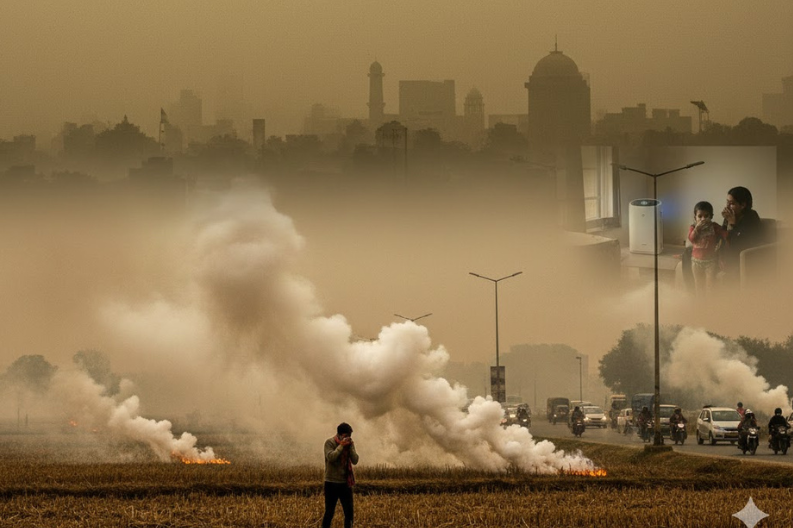The Current air quality and pollution situation in Delhi is getting worse each day, and Friday morning showed an AQI of 455, which is extremely dangerous. Although many people try to stay indoors, the dirty air still reaches them, and doctors say breathing this air is almost like smoking 11 cigarettes daily. Because of this, more residents are dealing with cough, burning eyes, and breathing trouble, and the problem continues to grow.
Delhi’s pollution rise mainly comes from stubble burning in Punjab. Farmers burn leftover crop waste after harvest, and the thick smoke quickly moves toward Delhi. As winter approaches, the cold air traps pollution close to the ground, and this makes the situation even harder to manage. Mohali, in the Chandigarh Capital Region, also struggles with thick smog, and hospitals there report more patients with breathing problems. Sadly, many cities in Punjab often rank among the lowest in air quality.
Meanwhile, authorities in Delhi tried cloud seeding to create artificial rain. They hoped the rain would reduce pollution levels. However, the plan failed, and a lot of money was lost, which upset many citizens. While experts keep tracking pollution, the Central Pollution Control Board reports that every winter brings high pollution due to weather conditions and human activities.
Air quality matters because bad air harms the body in many ways. It increases asthma, allergies, heart problems, and long-term lung diseases. Children and older people suffer the most. More than 1.5 million people die every year in India because of air pollution. As a result, both central and state governments face public pressure to take strict action. People want stronger rules to reduce stubble burning and control vehicle emissions.
Although the government encourages farmers to use machines that help manage crop residue, many farmers still choose burning because it is cheaper and faster. Schools, local groups, and health organizations are also spreading awareness about the dangers of pollution. At the same time, people are trying to protect themselves by wearing masks, avoiding outdoor work during peak hours, and using air purifiers at home.
Healthcare services across polluted cities are preparing for a rise in seasonal illnesses. Doctors suggest regular check-ups and early treatment to avoid complications. In addition, global environmental groups are working with Indian cities to bring better solutions and technology to reduce pollution.
The situation demands a joint effort. Communities must stay aware, governments must act quickly, and people must make small but meaningful changes in daily life. The current air quality and pollution situation affects everyone, and only strong and united action can create a healthier tomorrow.



